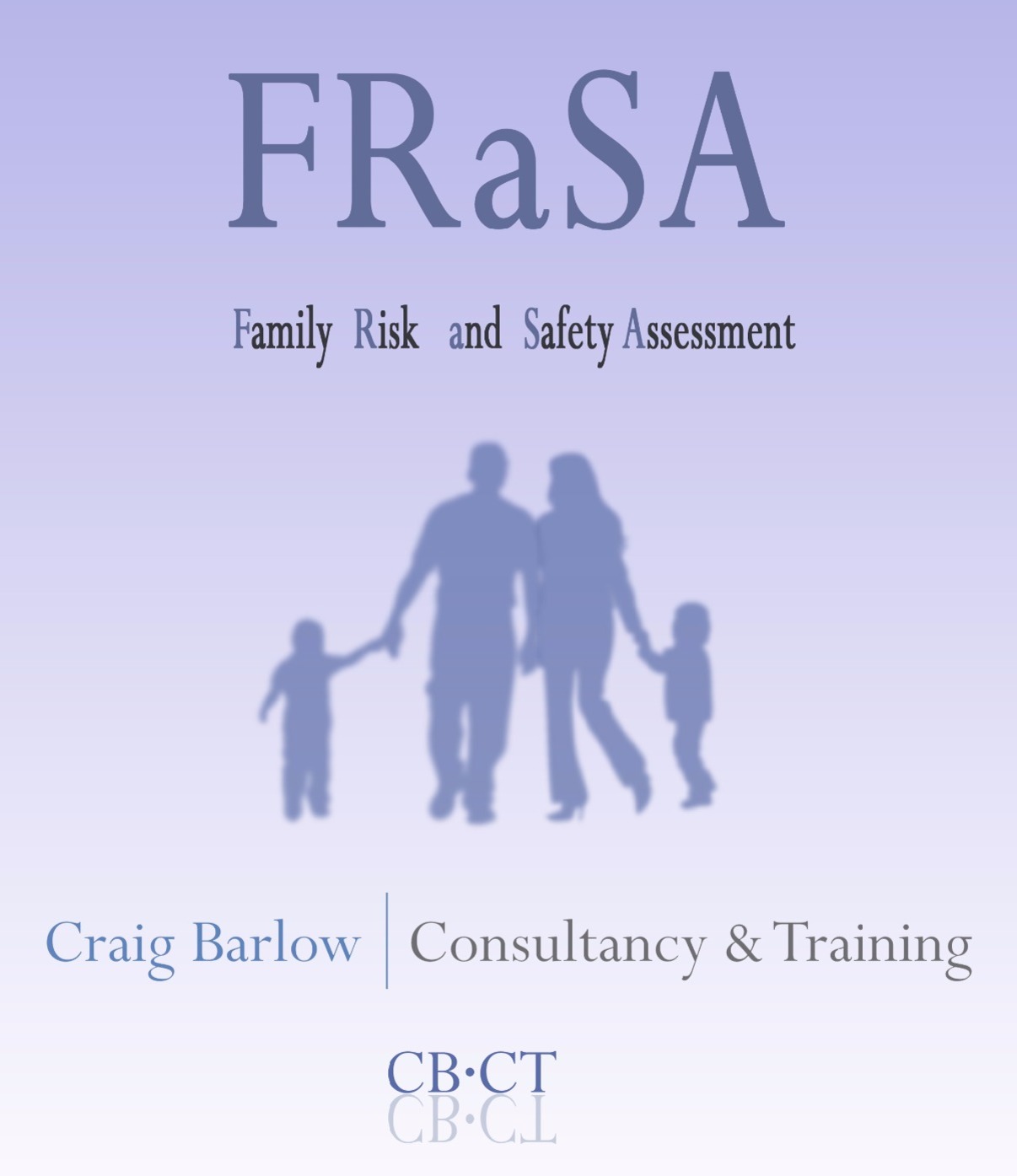
Nature and Goals of the Family Risk and Safety Assessment.
Maltreatment can be defined as actual, attempted or threatened physical and non physical harm to a child that is deliberate or reckless. The acts can vary with respect to such things as relationship to the victim(s), severity of physical or psychological harm, use of weapons and implements, motivations etc. This can include implicit threats (e.g. the victim felt threatened and reasonably believed that the other person had present ability to cause them harm). This working definition of maltreatment is therefore consistent with current related criminal law.
Child Maltreatment Risk Assessment is defined as the process of evaluating individuals in order to:
1. Characterise the risk or threat that a child will be maltreated
2. Develop interventions to manage and reduce that risk
(Webster, et al., 1997)
The focus should then be on decision making about what the individuals were trying to achieve and not simply what happened. It is the task of professionals to understand how and why a person has come to act harmfully in the past in order to determine whether the antecedents to that event might lead to similar events re-occurring.
The ultimate goal is the prevention of child maltreatment and resultant harm. This assessment procedure aims to be reliable in terms of replicable, consistent results. It should be used to identify, evaluate and prioritise health, social care and legal services that can work together to manage the risk of child maltreatment.
A process of structured professional judgment, such as the FRaSA, helps professionals make explicit, as far as possible, the basis for their opinions, decisions and interventions (Webster, et al., 1997).
Module 2: Child Physical Abuse, Emotional Abuse and Neglect: Using the Family Risk and Safety Assessment (FRaSA)
To provide Practitioners with a process of structured professional judgment that helps make explicit, as far as possible, the basis for their opinions, decisions and interventions.
Provide a risk assessment protocol that enables Practitioners to characterise the risk or threat that a child will be maltreated and develop interventions to manage and reduce that risk.
Guide best practice in identification and analysis of evidence from a range of sources.
Enable Practiitoners to balance risk factors for maltreatment and harm with buffers or protective factors associated with child and family resillience in adverse circumstances.
Enable Practitioners to judge the credibility of various sources of information, reconcile contradictory information and judge whether information is sufficient to permit a valid decision.
Consider major risk and resillience factors but also give practitioners the confidence to allow for the consideration of case specific risk and protective factors.
Assist Practitoners in the production of comprehensible reports to people who must use the findings of the assessment.
Encourage Practitioners to go beyond making static predictions to develop responsive, flexible interventions.
Download the FRaSA E-Manual
The E-Manual is in PDF Format with embedded links to all of the relevant SIPPS course pages. When you access course content from the e-manual you will need your user name and password for this site.
*Links may not work from phones or e-readers

Download the FRaSA Work Sheet in Word Format HERE

A Three Stage Process:
The quantity and quality of case information sets fundamental limits on the consistency (reliability) and accuracy (validity) of opinions regarding risk and subsequent planning and intervention. This does not mean that it is necessary or possible to gather information exhaustively. The items in the worksheet are intended to guide the assessor in terms of which information needs to be gathered and how it should be gathered:
The presence of individual risk / protective factors is determined using "Past" and "Recent" timeframes which can be useful when considering the causal role that a factor may have had with respect to maltreatment and harm occurring and thinking about the dynamic aspects of risk (Hart et al) 2003
Presence is coded by a 3 point scale that reflects the certainty of the assessor’s opinion.
Based upon the information that has been gathered it should be possible to identify the most realistic scenarios in which maltreatment and harm might occur. The scenario planning sheets guide the assessor’s analysis of each possible scenario:
Risk Assessment assumes that the person or family being assessed has a history, that there are a range of current proximal factors influencing their emotions, cognitions and behaviour that may exacerbate or reactivate past behaviour now, or in the future. In Module 1, we saw how childhood experiences of neglect, physical, and psychological / emotional abuse could have negative outcomes that have potential to impact upon a parent's capacity to cope and care for their cild(ren).
The FRaSA is designed to assess risk for physical abuse, emotional abuse and psychological abuse. It highlights the importance of a parent's history including their own experiences of parenting, history of substance abuse and major mental health problems. This module will examine these vulnerabilities as well as the vulnerability of young parents to enable assessors to evaluate the relevance of particular risk / vulnerability and resilience factors over time: presence and relevance of past experiences, presence and relevance of currend conditions and implications for the futre (risk management).
Summary
The FRaSA is a risk assessment and management tool that taps risk for Physical Abuse, Emotional / Psychological Abuse and Neglect.The e-manual provides an aide memoir and framework for structured professional judgement and decision making. The item descriptors in the manual are supplemented by the classroom based learning and the additional resources on the Module 1 pages, this page and all the subpages. It is intended that the activities and downloadable resources assist you in developing your knowledge base and confidence in undertaking risk assessments.
In Module 3, Adolescents at Risk Of Harm you will find that many of the topics that we have covered in these first 2 modules can have long term effects upon the welfare and development of the child and are relevant to teenagers as well as younger children.


